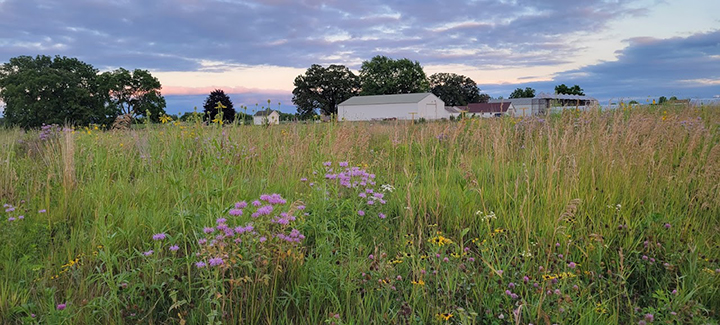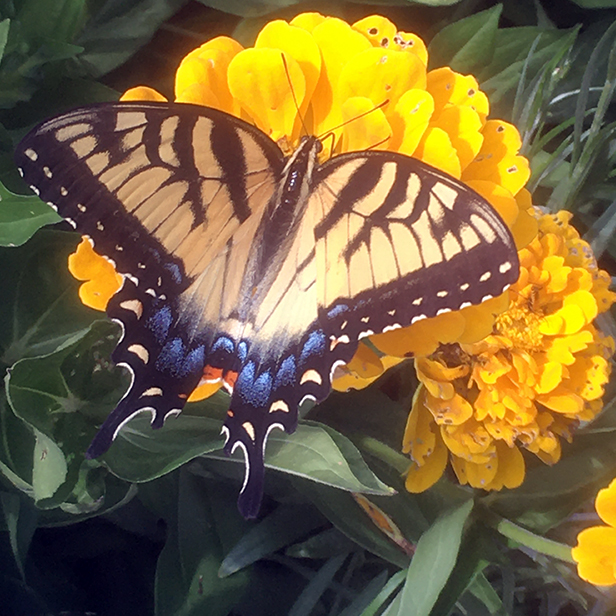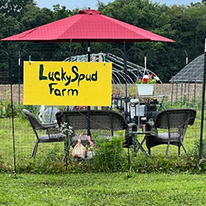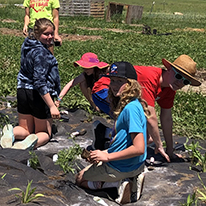Long ago, this part of Wisconsin was covered in tallgrass prairies and oak savannas. The Native Americans who lived here would have known every plant and how to use it. Over the centuries since European settlers arrived in Wisconsin, most of the land you see has been farmed, because the soil that nurtured those plants is enormously productive. But this shift from prairies to farms has had an unintended consequence–a steep decline in the health of our pollinator species.
What is a pollinator? Anything that helps carry pollen from the male part of a plant to the female part of a plant of the same species. Pollinators in Silverwood Park include insects like bees, butterflies, and moths, but also hummingbirds and some beetles and flies.
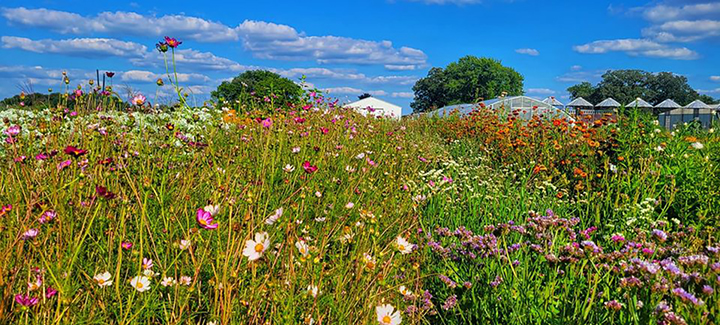
Specific plants require specific pollinators. A pollinator garden should include a wide variety of plants so that it attracts the variety of pollinators needed to create a diverse habitat where all species get what they need, at each life stage.
Silverwood Park’s Pollinator Prairie
In 2016, the Friends of Silverwood Park planted a pollinator prairie at the park. A generous donation from William Wartman funded the first purchase of plants. The Wartman pollinator prairie is located to the north of the Stonehouse Visitors’ Center, to the left of the farm lane. Elsewhere in the park, prairie strips provide a buffer between the park’s organic soils and the surrounding conventional farms, helping to prevent chemical fertilizers and pesticides from drifting into the park. These strips provide habitat for pollinators as well.
The Wartman pollinator prairie provides an outdoor classroom where visitors can learn about the value of pollinators, and how to help protect and support them. Donations to the Friends group help maintain and expand Silverwood Park’s pollinator gardens.
Silverwood Park’s pollinator areas also include a native-plants garden, flowering cover crops, and plantings by our grower-partners of pollinator-friendly plants. If you’ve seen the monarch butterflies among the sunflower plants, you’ve witnessed how organic crops help pollinators thrive—and vice versa.
Prairie habitats vary by the type of soil in which they grow, such as dry, wet, and mesic (in between wet and dry), and by the amount of sun they receive. By restoring prairie plants in different types of soil, in shady as well as sunny areas, we promote biodiversity that keeps as many pollinator species healthy as possible.
The Benefits of Healthy Pollinators
According to the National Park Service “One out of every three bites of food you eat exists because of the efforts of pollinators, including many fruits, vegetables, and seeds.” Without our pollinators, we would lose many of our food sources, and so would the insects, birds, and animals in the wild.
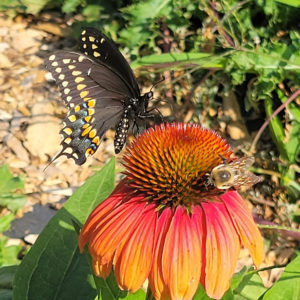
For food and shelter, many animals rely on the healthy ecosystems that pollinators help create. Conserving pollinator habitats helps reduce pests, protect soil and water quality, and enhance the beauty of natural areas.
Agriculture receives a boost from healthy pollinators, too. The presence of a pollinator garden leads to a pollinator population that increases seed and fruit production. Those native plants also contribute to healthy soil, as they tend to have deeper roots that help water infiltrate and keep the soil from becoming compacted. Soils, plants, insects, birds, and animals all benefit from healthy pollinators—and so do humans.
Can You Have a Pollinator Garden at Home?
Yes! Many people are adding pollinator gardens to their domestic landscapes. You help a diverse pollinator population thrive when you…
- Plant a Pollinator Garden with a variety of nectar and pollen sources.
- Provide nesting habitat for a diversity of pollinators. Hummingbirds, butterflies, and bees each have their own specific nesting needs.
- Avoid or limit pesticide use. Pesticides can kill pollinators for several days after application. Pesticides can also kill natural predators, creating more problems.
These tips came from the U.S. Fish and Wildlife Service website. Find out more here: fws.gov/pollinators.
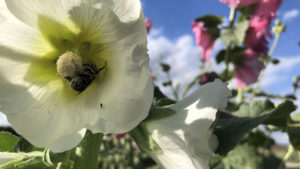
Even if you aren’t able to turn part of your yard into a pollinator garden, you can be part of creating healthy pollinator populations by supporting restoration efforts through donations to organizations that help to grow and manage natural habitats. Land conservation and wildlife organizations are our allies in supporting pollinator habitats.
When you visit Silverwood Park, take the time to look for our pollinator habitats and appreciate what they are doing for us all.
Dane County’s Park Restoration and Management Coordinator Claire Lamberg recommends the following resources.
- A go-to resource for pollinator info: Homepage | Pollinator.org
- 2023 Guide from Architectural Digest magazine “How to Create a Pollinator Garden in 7 Steps”
- Resources for butterfly gardens for local organizations and homeowners: Home – Wild Ones: Native Plants, Natural Landscapes
- Statistics for habitat loss in Wisconsin and the Midwest: Prairies communities of Wisconsin – Wisconsin DNR
- Prairie Moon Nursery, for information about native plants and how to grow them: Learning Center – Prairie Moon Nursery
- Story Map for natural areas: https://countyofdane.maps.arcgis.com/apps/MapSeries/index.html?appid=c8efa9c72d8448a58fd6bc28793673a3
- Good Oak Ecological Services, for information sheets about weeds, prairie restoration and, more: Knowledge Center Information Sheets from Good Oak Ecological Services
